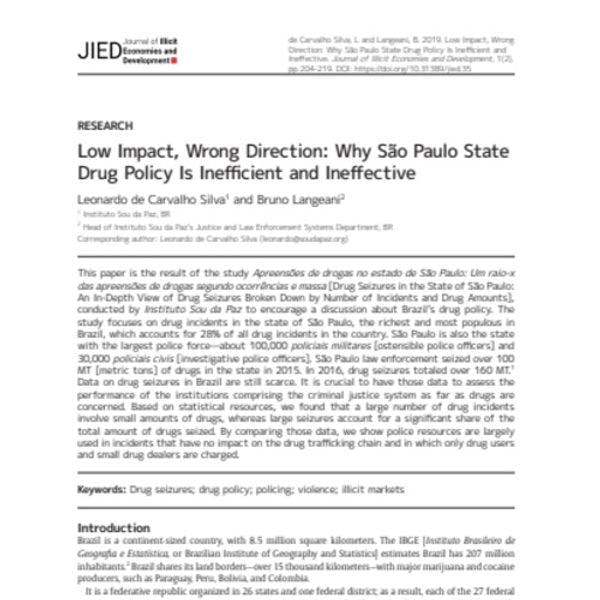Low impact, wrong direction: Why São Paulo State drug policy is inefficient and ineffective
By Leonardo de Carvalho Silva and Bruno Langeani
This paper is the result of the study Apreensões de drogas no estado de São Paulo: Um raio-x das apreensões de drogas segundo ocorrências e massa [Drug Seizures in the State of São Paulo: An In-Depth View of Drug Seizures Broken Down by Number of Incidents and Drug Amounts], conducted by Instituto Sou da Paz to encourage a discussion about Brazil’s drug policy. The study focuses on drug incidents in the state of São Paulo, the richest and most populous in Brazil, which accounts for 28% of all drug incidents in the country. São Paulo is also the state with the largest police force—about 100,000 policiais militares [ostensible police officers] and 30,000 policiais civis [investigative police officers].
São Paulo law enforcement seized over 100 MT [metric tons] of drugs in the state in 2015. In 2016, drug seizures totaled over 160 MT.1 Data on drug seizures in Brazil are still scarce. It is crucial to have those data to assess the performance of the institutions comprising the criminal justice system as far as drugs are concerned. Based on statistical resources, we found that a large number of drug incidents involve small amounts of drugs, whereas large seizures account for a significant share of the total amount of drugs seized. By comparing those data, we show police resources are largely used in incidents that have no impact on the drug trafficking chain and in which only drug users and small drug dealers are charged.
Downloads
Topics
Regions
Related Profiles
- London School of Economics
